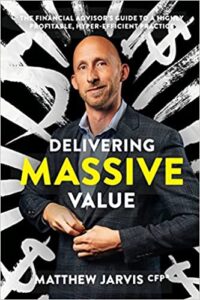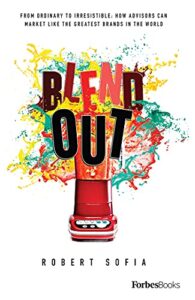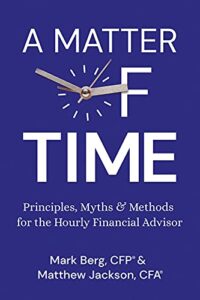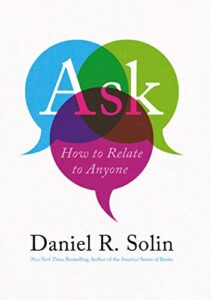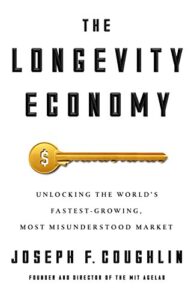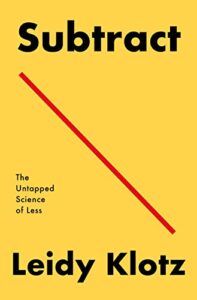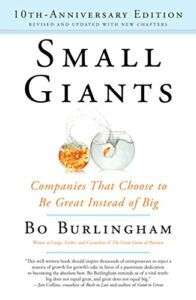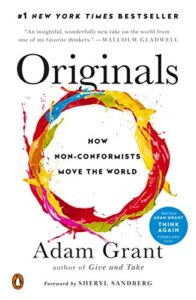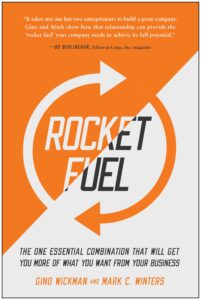Executive Summary
The first half of 2022 has not played out as most expected; the good news is that for most parts of the country, businesses and offices are re-opening (at least those that decided to return to in-person at all!), and by whatever means we’ve figured out how to ingrain the pandemic into our normal daily lives. The bad news is that the reinvigoration of activity seems to have spawned inflation, economic worries, and a challenging simultaneous decline in stocks and bonds. Which means the arrival of summer should bring some welcome relief – a traditional time for most to find some rest and relaxation (if only because clients also travel more during the summer, and are harder to pin down for meetings anyway!). And for many, this includes finding some time to read and catch up on a few good books!
For those who love to read, though (and especially for those who have limited time and will only get to read just one or two books over the summer), the question quickly becomes “what’s a good book worth reading this summer?”
As a voracious reader myself, I'm always eager to hear suggestions from others of great books to read, whether it's something new that's just come out, or an "old classic" that I should go back and read (again or for the first time!). And so, in the spirit of sharing, a few years ago I launched my list of "Recommended (Book) Reading for Financial Advisors", and it was so well received that in 2013 I also started sharing my annual "Summer Reading List" for financial advisors of the best books I'd read in the preceding year. It quickly became a perennial favorite on Nerd's Eye View, and so I've updated it every year, with new lists of books in 2014, 2015, 2016, 2017, 2018, 2019, 2020, and a fresh round last year in 2021.
And now, I'm now excited to share my latest Summer Reading list of top books for financial advisors in 2022, from a deep dive into how exactly to ‘deliver massive value’ to ongoing clients after the initial financial planning process, to what it takes to market an advisory firm successfully in a crowded landscape, how to build better rapport with prospects and clients by asking (more) effective questions, why sometimes the best path to a better business is not by growing and adding team members but knowing when to strategically subtract instead, several books on how to more effectively scale your advisory firm if/as it does grow (and how to ‘grow’ your business when the goal is not necessarily to be bigger, but to be better!), and a fantastic book on how to stop living in the “gap” between our current reality and the future ideal that always seems to be a little out of reach and instead learn to celebrate the “gain” by recognizing how far we’ve come in recent years.
So as the summer season gets underway, and summer vacations return, I hope that you find this suggested summer reading list of books for financial planners to be helpful… and please do share your own suggestions in the comments at the end of the article about the best books you've read over the past year as well!
Financial Planner Book List For 2022 Summer Reading
Delivering Massive Value
In our early days as financial advisors, our “value” was defined by the products that we sold; if you wanted to improve your value proposition to clients, you tried to find a better company to affiliate with that had a better lineup of products. But when advisors get paid for the service of financial advice – not just the products at the end – the pressure is on to demonstrate value in the advice process itself, especially after they go through the initial financial planning process, when the advisor still needs to be able to answer the “what have you done for me lately” question for clients paying ongoing fees.
For which Matthew Jarvis (of ‘The Perfect RIA’) provides his formula for “Delivering Massive Value” to grow a high-income practice with more than $240M of AUM for 170 households, built around delivering a series of ongoing systematized deliverables to clients on a quarterly basis (e.g., a review of clients’ beneficiary designations, capital gains/1099 report for clients’ CPAs, ongoing tracking of their retirement distributions with a one-page “guardrails” report, review of the clients’ long-term care insurance policies, etc.) and having a structured agenda for every client meeting that covers their concerns, and your value-add deliverables for the first 40+ minutes of the meeting… such that there’s very little conversation about the portfolio, because there literally isn’t time remaining in the meeting after all the more constructive talking points about other non-investment financial planning issues. Which ultimately was so engaging to clients that Jarvis was able to raise his AUM fee on all existing clients from 1% to 1.5% on the first $1M of assets.
Along the way, though, Jarvis provides valuable practice management advice for solo practitioners, including why and how to build a personalized team to leverage yourself (and how to empower them to actually give you a lift in your time), how to delegate more effectively for any task that isn’t generating $1,000/hour for your business, implementing client meeting surges to maximize your own productivity, how to market yourself more effectively and the way Jarvis practices his own sales process, and perhaps most importantly how to overcome your own “head trash” (as Jarvis puts it, “the garbage that fills your head, clutters your thoughts, and keeps you from the business – and life – you deserve”) to raise your fees and charge what you’re really worth when “Delivering [your] Massive Value”.
Blend Out: From Ordinary To Irresistible
For nearly all of its existence, the financial advisor business has been an “eat what you kill” business, where advisors were expected to go out and ‘hunt’ (prospect) and ‘kill’ (close the sale) with prospects. Accordingly, the most successful advisors were also the most effective hunters – who could go out into the world and find prospective clients to do business with. After all, it doesn’t matter how much value you can provide, if you can’t find and get in front of anyone to tell them about it and ask them to do business with you in the first place!
Yet the reality is that outside of the world of financial advisors, most businesses take an alternative approach – they don’t go out and ‘hunt’ for prospects, they engage in marketing activities that attract prospective clients to them in the first place. After which it’s still necessary to engage in a sales process to close the business. But built around a process where advisors don’t pick up the phone and (cold-)call for business; they pick up the phone because prospects are calling them to learn more about the advisor’s services in the first place? Which is challenging for most financial advisors, because we were never trained in how to market ourselves to attract prospects to begin with.
In his new book “Blend Out”, Robert Sofia (of Snappy Kraken marketing software, and previously Platinum Advisor Marketing), shares his expertise on how financial advisors can market effectively. For which the starting point is to ‘Bold’ in a way that makes you impossible to ignore in the first place; in other words, while most people by default try to ‘blend in’ with everyone else, the key to marketing success is to “Blend Out” (i.e., to intentionally stand out) from the crowd… in a way that meaningfully connects to the prospects the advisor is trying to reach.
For instance, Sofia tells the story of one advisory firm that wanted to create a new mailer for their seminar marketing process – for which Sofia’s firm took the message “Don’t let inflation rob you of your retirement” and featured an enormous electric-pink piggy bank balloon floating in a bright blue sky with the words “Inflation. Will it rob you?” emblazoned on the side. The advisory firm argued that they were ‘too conservative’ for the ad, and went with a more traditional approach of a sad-looking-retiree couple who had apparently been robbed of their retirement by inflation with bullet points about inflation and its risks. But shortly thereafter, another advisory firm decided to use the ad design instead… and within days, discovered that it was producing a 4X(!) greater response rate. Not because the bold piggy bank was such a compelling reason to sign up for a seminar… but because it was too bold to ignore the ad the way our brains are tuned to tune out the rest of the advertising content that bombards us on a continuous basis.
From there, Sofia provides guidance about how to apply ‘Bold’ marketing effectively – which as it turns out, is fairly ‘standard’ advice: have relevant messages that evoke laughter, thinking, or sadness in prospects because that’s what’s memorable; show up in the ‘right’ places where prospects are so they see the message; make an initial offer that brings them in so they can get more familiar with you (because familiarity breeds trust); and then give them something worth talking about (to make you more referrable).
But the key point to all of this is that when most advisor firms are more worried about fitting in than standing out, it’s almost impossible to get noticed in a sea of sameness in the first place. The starting point – and the place that most advisory firms fail – is in being Bold enough to be noticed in the first place. And so Sofia’s book explains – with compelling stories and examples that help to build confidence – why it’s so crucial not to blend in, but to “Blend Out” instead.
A Matter of Time: Principles, Myths & Methods for the Hourly Financial Advisor
It is a recognized standard that when it comes to established professional services – like law and accounting – that the client pays for the professional’s time, such that most are paid either an outright hourly fee, or at least are paid in the form of project fees that are priced based on the number of hours it is anticipated to deliver the service (multiplied by that hourly rate). As a result, many industry pundits have suggested that it is only a matter of time before financial advisors, too, convert to the hourly model of delivering financial advice.
In practice, though, despite being championed by organizations like the Garrett Planning Network for nearly 20 years, the hourly model thus far has been very slow to gain traction amongst financial advisors, with concerns that it is too ‘transactional’ (one hourly client/engagement at a time) and not scalable. For which there are only a very few advisors, like Mark Berg of Timothy Financial, who have managed to successfully scale up to more than $1M of annual revenue in a multi-advisor hourly advisory business.
And so in “A Matter Of Time”, Berg himself (and pricing consultant Matthew Jackson of Dialektic) lay out the formula for what it actually takes to build and scale an hourly advisory firm, and tackle the key “myths” along the way: hourly advice is still a form of value-based pricing, because it’s the clients with the biggest and most complex problems and the financial wherewithal to have them solved who will pay the most for it; hourly is not one-size-fits-all because rates can and should vary by advisor to reflect their knowledge and experience; the hourly model is not purely transactional because some clients simply want to engage in an ongoing relationship on their (hourly) terms; and hourly businesses absolutely can scale, at similar revenue-per-advisor numbers to other types of advisory firms, as long as the advisor charges an appropriate hourly rate and engages in the necessary number of client-facing hours delivering billable services.
Beyond just tackling the hourly-model myths, though, Berg and Jackson delve deep into what it takes to actually build a successful hourly advisory firm, including the unique ways that hourly firms can market because of the clarity of their offering and pricing, how to define your offering and set your hourly rate, and the key business metrics to track (in particular, client utilization of the advisors’ available service hours) to successfully scale.
In the end, though, arguably the real takeaway from Berg and Jackson is that the hourly model isn’t just a way of pricing, but an entire culture and philosophy of how to do business in a particular way, with a certain mindset about how to price (and get comfortable quoting and charging for) your time. Which may not appeal to all advisors, but for those who are interested in building ‘Advice-Only’ firms that solely charge for their time and expertise (and not assets or product implementation), “A Matter Of Time” is the handbook of how to start, run, and scale an hourly advice business.
Ask: How To Relate To Anyone
The financial advice business is not only a business of expert advice; it’s also a business of relationships. In part, because actually getting clients to take and implement the advice is greatly enhanced by having a strong relationship with the client, where the advisor can function as an accountability partner to help them adhere to and follow through on the advice. And in part, because retaining clients – especially in the inevitable times where the situation gets tough (e.g., in the midst of a bear market) – is heavily reliant on a strong advisor-client relationship to help keep the client on board.
Yet while at least some advisory firms may teach how to sell financial advice to a prospective client and how to deliver a financial plan to a new client, remarkably few ever teach and train how to develop relationships with those clients. Instead, the advisory business tends to simply seek out those who are ‘natural’ communicators and relationship-builders, who can quickly establish rapport with any client they work with (and the only challenge is getting those clients in the first place).
In “Ask”, Solin explores the research on relationship-building to show that the core of what it takes to actually build a connection with other people has nothing to do with being an introvert or extravert, or natural-born capabilities, but instead is a learnable and trainable skill, that comes down to one simple principle: to ask other people more questions.
Notably, the point of 'Ask'-ing is not simply to get the answers to the questions in order to gain more knowledge about the client. Instead, the reality is that physiologically, when we talk about ourselves, it literally feels good – as it leads the brain to release both dopamine and oxytocin, hormones that drive both our own positive mood and our feelings of connectedness with others. Which means that asking questions that get prospects and clients talking about themselves makes them feel more connected to the advisor, as the advisor’s question-asking prompts directly lead to actions that result in the client’s brain feeling more connected to the relationship.
As a result, it’s not even necessarily about knowing the “magic questions” to ask, per se, but simply to approach every conversation with prospects and clients with a curious mind to ask genuine questions and good follow-up questions about them to learn more about them. For which arguably the biggest challenge is simply that, because the phenomenon of talking about ourselves builds positive feelings in our brains, that we as advisors have to be careful not to start talking about ourselves (because it feels good to us, too!) and just keep the conversation focused on the prospect or client doing the answering.
Ultimately, “Ask” is a relatively short and easy read with a simple and straightforward point, but Solin’s approach of mixing together the raw research and data with stories of how to apply the techniques simply and practically makes the book both a nice refresher for experienced advisors trying to build better client communication habits, and a great starter book for newer advisors trying to learn how to build better relationships with their own clients and prospects!
The Longevity Economy: Unlocking The World’s Fastest-Growing, Most Misunderstood Market
The most common type of specialization for financial advisors is to work with retirees (and those pre-retirees about to transition into retirement). This isn’t entirely surprising, given that the most popular financial advisor business model is assets under management, and for most of the past decade, more than 80% of all investable assets were in the hands of (retiring) Baby Boomers and the already-retired Silent Generation. In other words, financial advisors tend to focus on retirees because that’s where the (investable) money is.
More broadly, though, the whole construct of “retirement” in the first place is naturally conducive to needing a financial advisor. As financial advisors can support on everything from the accumulation of assets to be able to retire, the management (and drawdown from) those assets once it’s time to retire, and provide advice on how to achieve one’s goals and maximize one’s fulfillment from those assets during their remaining days on earth. After all, isn’t the whole point of the “golden years” of retirement to live a life of leisure, allocating the accumulated retirement resources to be able to afford anything we may want (luxury and leisure) or need (lifestyle spending and medical care)?
Yet as Joseph Coughlin explains in “The Longevity Economy”, the irony is that the focus of financial advisors on managing retirement assets to afford a life of luxury wasn’t just the industry rising to meet the need… but a need that was manufactured by the financial services industry in the first place. Because as Coughlin details, “retirement” was not a natural state of human beings for most of our existence on earth, and even when rising life expectancies meant a growing likelihood that there would be years beyond our ability to work when we would need to care for ourselves, it wasn’t until the financial services industry in the 1950s began to market retirement as not just a period when one withdraws (i.e., literally to “retire”) from work, but a period of fulfillment – initially called “the fulfillment years”, and then eventually “the golden years” with the rise in the 1960s of the first leisure-living retirement community (Del Webb’s Sun City in Arizona).
Which helps to explain both the recent rise of the phenomenon of “working in retirement” – which should be an oxymoron, but instead reflects the simple reality that many people actually find meaningful purpose and fulfilling engagement in their work – as well as the rise of “grey divorce” (in recent decades, the divorce rate has remained relatively level for those in their working years, but has skyrocketed by more than 2X amongst those who find themselves in not-as-fulfilling-as-expected retirement), and also the rise of ‘senior’ entrepreneurship (with the entrepreneurship rate doubling for those aged 55-64 since the mid-1990s), and seniors (who are supposed to be winding down towards retirement) now experiencing the highest rate of entrepreneurship of any age group!
Ultimately, the realization that a fulfilling retirement might not actually be what the financial services industry has painted it to be (at least for a large segment of consumers, though the rapid growth of “The Villages” retirement community in Florida suggests there is at least a subset of consumers that do enjoy the retirement vision of a life of leisure) paints a picture of major new opportunities for what those of retirement age might actually want to do, to buy, to hire, and to engage with. Which for financial advisors makes Coughlin’s “The Longevity Economy” meaningful both for a better understanding of the changing picture of “retirees” today, and perhaps even for inspiration about alternative ways to serve non-retiring retirement-aged clients in the future!?
Subtract: The Untapped Science Of Less
The idea of “more is better” is naturally ingrained throughout society, and there is arguably no place where it is more well entrenched than the financial services industry. After all, the entire premise of helping clients manage their investments is to grow them to more (whether to live a more financially fulfilling lifestyle, or simply to fend off the impact of inflation making that existing lifestyle more expensive), and advisory firms are most commonly celebrated for the size of their AUM and the rapidity by which they’re growing it.
Yet research has found that there are diminishing returns on our happiness once income and affluence rises beyond a certain threshold (with one famous study pegging the estimate around $75,000/year), and Kitces Research has similarly found that advisory firm owners don’t see an ongoing increase in happiness (and in fact, many see an outright decline) once advisory firms grow beyond about $2M in revenue. In other words, “more” may be good up to a point, but beyond that point it can become more of a burden than a benefit, once it’s more than “enough”. Consequently, the real question for many people, upon achieving a certain level of success, is not about how to keep adding more, but instead about how to start doing less.
In his book “Subtract”, Leidy Klotz explores this dynamic – in particular, how remarkably difficult it is for us to even think of doing less instead of more, and how powerful it can be when we engage in strategic subtractions instead of just always trying to add/grow our way out of problems. For instance, Klotz tells the story of building a Lego bridge with his three-year-old, who had to reconcile the fact that the two towers of the bridge were different heights… where his (adult) inclination was to go find another brick to add to the shorter tower and make it bigger, but it was his child’s realization that the easier path was simply to remove a block from the taller tower to align their heights.
Along these lines, Klotz notes that in practice, the difficult challenge of conscious subtraction over ‘idle’ addition has actually long been recognized as the wiser choice, from Da Vinci who observed that “perfection is achieved not when there is nothing more to add, but when there is nothing left to take away”, and more than two millennia ago Lao Tzu suggested “to attain knowledge, add things every day. To attain wisdom, subtract things every day.”
The recognition that sometimes the best path is to stop adding and instead subtract can apply to everything from trying to not spend more time just acquiring information and instead focusing the time on distilling that information, to spending less time creating (building more) and more time editing (subtracting out what doesn’t belong), to advisory firms that get ‘stuck’ growing to client size (and staff count) that is more than the advisor every really wanted, and improving their work/life balance, their income, and their well-being by subtracting clients and staff and “right-sizing” the business instead.
In the end, “Subtract” provides a wide range of examples throughout the world and society where subtracting ended out being a more fruitful endeavor than adding more, though ultimately the power of reading the book is not to think about how society has a perhaps-unhealthy obsession with “more”, but finding in the pages the inspiration and courage to take the difficult step of subtraction in our own lives.
Small Giants: Companies That Choose To Be Great Instead Of Big
If you look at Barron’s and similar “Top Advisor” lists, it seems like every advisory firm is growing by leaps and bounds, and any firm that isn’t must be ‘failing’ to achieve its growth potential. Yet a broader look at the industry by those like FP Transitions finds that in reality, only about 5% of all advisory firms ever grow to become a multi-advisor business that even could sustain beyond the founding advisor, while the other 95% of us simply have a book of clients we serve or perhaps have built a practice around leveraging ourselves up to serve a few more clients.
Which doesn’t necessarily mean that only 5% of advisory firms have figured out “the growth formula” and the other 95% have not. As most advisors, when asked why they haven’t grown a larger advisory firm, will typically explain that the real concern of growing bigger is that it’s harder to maintain the same standard of service for clients if the firm grows too large and/or too fast. In other words, most advisory firms may be “small” not necessarily because they don’t know how to grow big or can’t do so, but because it’s more important to them to be great to the clients they have than just to be big solely for the sake of.
And as it turns out, the desire to prioritize “greatness” over “bigness” is not unique to financial advisors, as Bo Burlingham explains in his book “Small Giants”, which details the story of a wide range of businesses that choose to be great over just being big… or at Burlingham puts it, businesses that “turned down growth opportunities because they had larger ambitions”, where success was not measured by the size of the business alone, but by its quality and impact within the community it serves.
The significance of this “Small Giants” phenomenon, though, is not merely a recognition that for some businesses, greatness of quality may be more important than size alone, but that businesses that intend to optimize for greatness operate in a fundamentally different way than those scaling up for size alone. In particular, Small Giants focus heavily on their mission (the purpose filter through which all other business decisions are made), have a strong focus on culture (necessary to ensure the quality of service at the standards they expect), don’t sacrifice profitability on the alter of size, form deeper relationships with their clients and other stakeholders, and engage more meaningfully with their community.
From the financial advisor perspective, Burlingham’s “Small Giants” is a powerful and potentially life-changing book, because it provides a roadmap for an alternative to the more-more-more celebration of bigness in the financial services industry, one that is more attuned to what most financial advisors already seek out but have up to this point been told is lacking: that you really can build a business that puts greatness before bigness… and that doing so can also, in the end, turn out to be a remarkably large and financially successful enterprise anyway!
Originals: How Non-Conformists Move The World
For most people, being “different” than everyone else and standing out from the crowd is scary – an inclination that appears to be hard-wired into our brains as human beings, winnowed down by a natural selection process where those who conformed and stuck with the safety of the herd survived, and those who wandered off to do something different were eaten by predators. Being a non-conformist is risky business.
Yet at the same time, the reality is that the very essence of innovation, creativity, and the entrepreneurial successes that can come from them, virtually require someone at some point to do something different than the status quo that everyone else is already doing. In fact, researchers have found that even the smartest amongst us – child prodigies – don’t appear to innovate and create at a dramatically different rate than the rest of us. It’s the creatives who are most willing to do something different and are least interested in following the rules – or just make up their own rules – who tend to build successful businesses and innovate new services.
In “Originals”, researcher and professor Adam Grant details the unique phenomenon that is the “non-conformist” and the somewhat counter-intuitive ways that creative non-conformists actually succeed. For instance, the conventional view is that creatives are successful because they have, well, more creative ideas than anyone else… but it turns out that the real determinant of success is not the ability to generate ideas, but the ability to make effective selections of which ideas to pursue with limited time and resources. Echoing Jim Collins’ famous aphorism, “the fox knows many things, but the hedgehog knows one big thing”.
Other surprising revelations about non-conformists and entrepreneurs from Grant’s research include: entrepreneurs are often viewed as being successful because they’re the first to see a new opportunity, but in practice the most successful entrepreneurs are often quite cautious, procrastinating not as a means of delaying but allowing time for an idea to incubate; successful entrepreneurs are most often the ones that do not take blind fantastic leaps (notwithstanding the media celebration of college drop-outs who founded the Next Big Thing), but those who carefully mitigate their risk by cautiously pursuing a new path with a safety net (e.g., healthy personal savings, a spouse’s income, another job, etc.) so they’ll have the staying power it takes to actually see it through; and that success in taking the leap isn’t about blind optimism and avoiding pessimistic thoughts but that in fact the most successful non-conformists are those who have the clearest view of the pessimistic risks, because that’s what allows them to both mentally prepare to endure the challenges and strategically plan how to overcome them.
In the end, “Originals” will resonate the most with those who have some element of “non-conformism” within them, but are afraid to unleash their own ideas and creativity out of fear that they will fail or that it’s too ‘risky’ to take the risk of doing so… because as it turns out, our traditional view of non-conformist entrepreneurs as blind risk-taking leapers is not an accurate reflection of reality, and understanding how entrepreneurs who have a vision of how the world can be better navigate the risks and their own fears is the most empowering way to really take the leap to doing something great.
Rocket Fuel: The One Essential Combination That Will Get You More Of What You Want From Your Business
Some of the world’s most iconic brands that have changed the world were led by high-profile visionaries who brought that vision to reality, from Steve Jobs at Apple to Bill Gates at Microsoft and Walt Disney of the Disney company. Except as it turns out, such Visionaries alone are not necessarily the ones who really make the business successful; in practice, Steve Jobs had Steve Wozniak, Bill Gates had Steve Ballmer, and Walt Disney had his brother Roy (who was the one that actually made Disney a financially viable business, as the size and ambition of Walt’s dreams nearly bankrupted the company!).
In other words, Visionaries alone often can and do struggle to build successful businesses alone; it’s having a second-in-command, an “Integrator”, who can turn sometimes-too-abstract dreams into practical reality, that is the real key to success. As a Visionary without an Integrator is at risk of succumbing to the proverbial “vision without execution is just a hallucination” outcome, while an Integrator without a Visionary may be ready to execute but lack clarity and perspective about what to build in the first place.
In “Rocket Fuel”, Wickman and Winters explain how just as rocket fuel is a combination of compounds that individually are inert but combined have literally-explosive propulsion, so too can the Visionary/Integrator dyad power fast-growing businesses in a manner far more powerful than either can accomplish alone. As the Visionary dreams the dreams that only Visionaries can… and the Integrator leverages their unique skills to bring it to reality in a way that the Visionary cannot.
From the financial advisor perspective, Rocket Fuel is a powerful analogy in a world where financial advisors themselves are often quite visionary (especially amongst the independent advisor channel, where it takes a certain amount of vision to see what can be accomplished by taking the leap to build a business serving a particular segment of clients in a particular manner), and then often struggle to grow the business past a certain point because the complexities that arise in the path of scaling a business are the challenges that typically take an Integrator – not the Visionary – to solve.
And so for visionary financial advisors who feel they may have ‘hit the wall’, and have a vision of growing further but can’t figure out how to make that a reality as they’re increasingly bogged down by the business’s needs to build systems and infrastructure and manage and develop people (instead of ‘just’ delivering on the vision), “Rocket Fuel” illustrates a new path for getting to the next level, not by ‘doing’ something new and different in the business, but understanding the right type of right-hand person it takes to form the Visionary-Integrator dyad that can actually move the business forward.
The Gap and the Gain: The High Achiever’s Guide To Happiness, Confidence, And Success
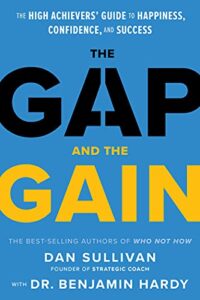 (Benjamin Hardy & Dan Sullivan)
(Benjamin Hardy & Dan Sullivan)
One of the most unfortunate paradoxes of high achievers is that the successive high standards they set for themselves mean that even as they reach ever-newer heights of success, they rarely ever achieve any level of happiness or satisfaction with their accomplishments, as there’s ‘always’ a next level to reach towards beyond the current one, which means no matter how far they get, there’s ‘always’ an unsatisfying gap between where they are and where they aspire to be. In other words, by always setting the bar higher and higher, the rising standards that help high achievers to keep climbing to new levels of success also ensure they’ll never be satisfied with the results.
More generally, the path of pursuing (ever-higher) high standards means that the present – no matter how great – will always be diminished in the shadow of an even-more-aspirational future. And living in that Gap for an ongoing period of time can be outright depressing; thus, literally, why CEOs are twice as likely to have depression as the general public, and entrepreneurs are prone to substance abuse, depression, and suicide. Constantly measuring yourself against a future ideal – that as a high achiever can never be reached, because we constantly reset the goal posts on ourselves – is a challenging gap to live in indefinitely.
But as Hardy and Sullivan explain in “The Gap and the Gain”, there is an alternative – that instead of measuring ourselves against the future-ideal we’re indefinitely pursuing (and never reaching because we keep pushing towards a new ideal), we measure from where we started in the first place, focusing instead on the Gains we’ve achieved from the beginning up to the present (rather than the Gap between the present and an impossibly idealistic future).
Notably, the concept of measuring the Gain of our own progress is naturally an inward-looking measurement of success – not only is it not about living in the Gap between the present and an Ideal future, but it’s not about “keeping up with the Joneses” either. As measuring the Gain is inherently a measure against ourselves – literally, what we were once doing and achieving, against what we’re now capable of. Which is naturally confidence-building for future success (as the reality is that we typically find confidence in our successes and the ‘gains’ we’ve already had).
In the end, “The Gap and the Gain” is about re-defining how you find your confidence, reorienting yourself away from looking at the future and living in the Gap (that for high-achievers, can be an depressing pursuit towards a mirage that continuously gets further away as you approach it), and instead reflecting on the past so you can celebrate the Gain and use the confidence of those successes to propel yourself forward towards what’s next. Which starts with simple habits detailed by Hardy and Sullivan, like just taking a few minutes at the end of every day, just before going to sleep, to write down three “wins” each day (successes that you’re grateful for), and three “wins” you’re hoping to accomplish the next day… and let your subconscious start working while you sleep on how you’re going to make tomorrow even better by living in the Gains of today.
If you’re still looking for more book ideas, be certain to also check out our prior summer reading lists, along with our overall list of recommended books for financial advisors. They may be lists we've published in the past, but if you haven’t read the books yet, they're still new to you! 🙂
Top Must-Read Books for Financial Planners
2021 Summer Reading List of “Best Books” For Financial Advisors
2020 Summer Reading List of “Best Books” For Financial Advisors
2019 Summer Reading List of “Best Books” For Financial Advisors
2018 Summer Reading List of “Best Books” For Financial Advisors
2017 Summer Reading List of “Best Books” For Financial Advisors
2016 Summer Reading List of “Best Books” For Financial Advisors
2015 Summer Book List For Financial Advisors
2014 Summer Reading List Of Best Books For Financial Advisors
2013 Summer Reading List Of Top Financial Advisor Books
So what do you think? Will you be reading any of these books over the summer? Do you have any suggestions of your own that you’re willing to share? Please share your own great reads in the comments below!


